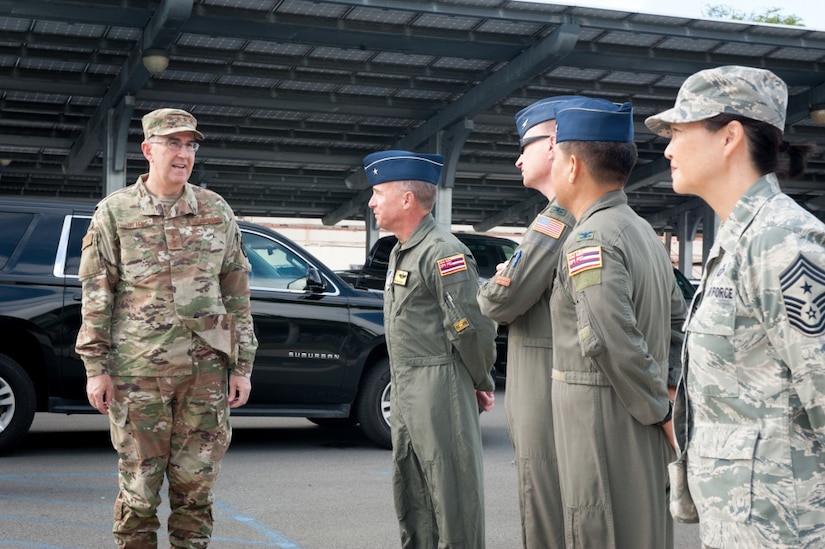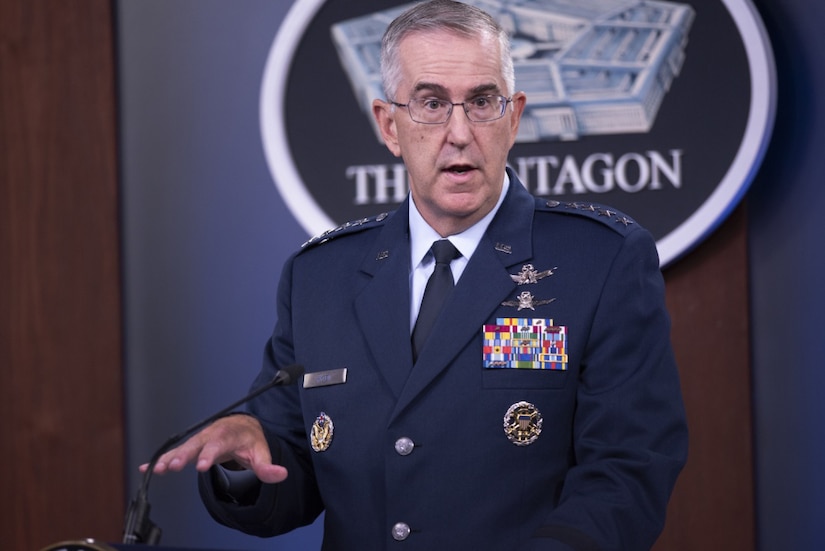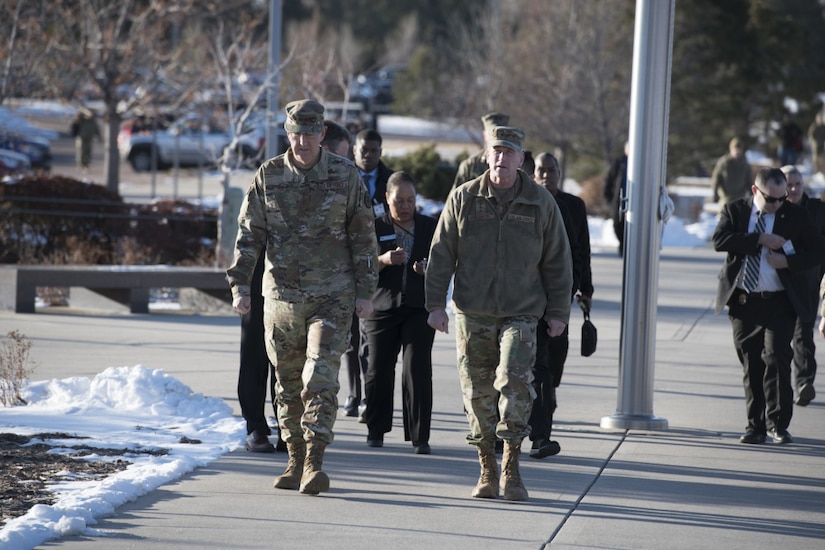Aug. 12, 2020 | , DOD News
As the Defense Department looked at restructuring its forces in Europe, officials had to decide how a restructure would deal with today's threats as defined in the National Defense Strategy, the vice chairman of the Joint Chiefs of Staff told the Hudson Institute today.
Air Force Gen. John E. Hyten said the NDS — which focuses on force lethality, increasing partners and allies, and reforming DOD — is a strategy "based on a threat."

When DOD looked at Europe, it had a series of priorities, he said:
- Whatever we do in Europe should improve our deterrent posture.
- DOD must better engage with its allies across the European continent.
- DOD needs to improve its partnership with NATO.
- DOD must make sure its armed forces are ready and it could give more flexible options for deploying the force.
- DOD must ensure it is true to its commitment to its service members and their families that are deployed in Europe.
"We are moving [some] forces back to the United States so we can
improve readiness, and then deploy them back into Europe on a rotational
basis and some other places in Europe to allow us to better be postured
for the threat," the vice chairman said.
"You'll see Poland be a more active partner, you'll see Romania be a
more active partner, [and] you'll see the Black Sea area more active
because that's where we improve our deterrence versus Russia, which was
[Defense Secretary Dr. Mark T. Esper's] No. 1 priority," Hyten said.
After the military is done with the restructure, the largest number of forces will still be in Germany, he said, calling Germany "a critical ally."
The secretary asked DOD to build a new joint warfighting concept and to have the first defined by the end of this year, Hyten said.

The secretary also said to integrate the Army's focus on multidomain operation, the Air Force's focus on multidomain command and control, and the Navy's focus on fleet operations, the vice chairman said. "As we've looked at each of those, we started to build a joint warfighting concept," he added.
"But it's really combined in … all the main command and control, because we have to be able to do it with our allies and partners too," he said.
"Because if we figured out how to do it in the United States, … since we do everything as a coalition, when we bring a coalition together, they have to understand how to fit in because we have to draw a line for them."
If DOD and its allies can do all of that together, the general said, it creates a huge advantage for the future joint combined force, and it will create huge challenges for competitors around the world to try to figure out how to deal with it. Hyten said that's the path DOD has been going down for a while, and it's starting to actually mature and come to fruition now. "It's pretty exciting to see," he said.

Allies and partners are probably DOD's biggest advantage in the world today, "and will be as far as I can see in the future," the vice chairman said.
"[We] want to make sure that when our allies come with us — whether they come with us in the air at sea on the land — that they have capabilities to allow them to interoperate with the tactical units they're falling in with."
The command and control relationship is going to be "critically important to build as we go forward," Hyten said.
No comments:
Post a Comment